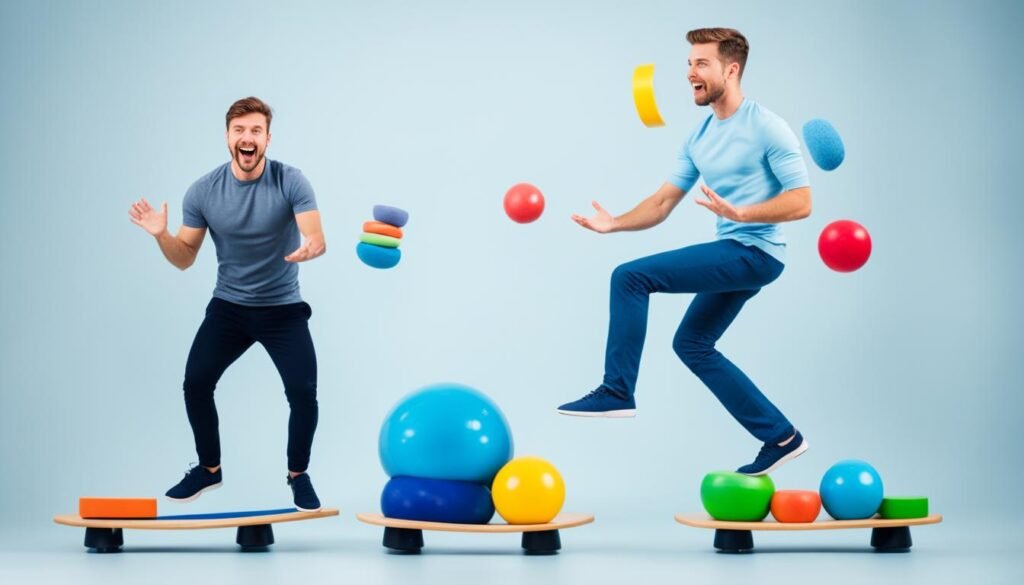Adult learning theory is an essential aspect of training programs for staff members. Tailoring training to adult learning styles improves motivation and results. The basics of adult learning theory are rooted in the concept of andragogy, which includes characteristics such as an internal drive to learn, self-directed learning, drawing upon previous experiences, and solving real-world problems. Adult learners can be categorized into three main learning styles: auditory, kinesthetic, and visual. Research has shown that a blend of these three styles is most effective, with adults retaining 10% of what they see, 30-40% of what they see and hear, and 90% of what they see, hear, and do. Assessing staff members’ learning styles can be done through self-assessment, feedback, and observation. Utilizing a Learning Management Platform can cater to different learning styles and enhance the training experience.
Key Takeaways:
- Adult learning theory is crucial in training programs as it improves motivation and results.
- Andragogy emphasizes self-directed learning, drawing upon previous experiences, and solving real-world problems.
- Adult learners can be categorized into auditory, kinesthetic, and visual learning styles.
- A blend of auditory, kinesthetic, and visual learning methods is most effective for adults.
- Assessing staff members’ learning styles can be done through self-assessment, feedback, and observation.
- A Learning Management Platform can cater to different learning styles and enhance the training experience.
Understanding adult learning styles is crucial for effective education and training programs. By tailoring training to the diverse needs of adult learners, educators can create engaging and impactful learning experiences. This article will delve into the basics of adult learning theory, the three main adult learning styles, assessing learning styles, and using a Learning Management Platform to enhance adult learning. Through an understanding of adult learning styles and the use of appropriate teaching strategies, educators can empower adult learners and facilitate their personal and professional growth.
The Basics of Adult Learning Theory
Adult learning theory, also known as andragogy, was developed by Malcolm Knowles. It recognizes that adults have different motivations and ways of learning compared to children. Andragogy emphasizes self-directed learning, where adults have an internal drive to learn and can draw upon their previous experiences to contextualize new knowledge. Additionally, adults are motivated by solving real-world problems and applying new knowledge to practical situations. To effectively implement andragogy, a cultural shift is required in traditional educational approaches. Creating an inclusive training program that caters to the diverse learning needs of adult learners is essential.
Andragogy is a theory of adult learning that acknowledges the unique characteristics and motivations of adult learners. Unlike children, adults are internally driven to learn and seek knowledge that is relevant to their lives. They bring a wealth of previous experiences to the learning process, which allows them to connect new information to their existing knowledge base. Adult learners are motivated by solving real-world problems and applying their learning to practical situations.
Implementing andragogy requires a fundamental shift in traditional educational approaches, which often rely on a more teacher-centered model. Instead, an inclusive training program should be designed to cater to the diverse learning needs of adult learners. This means providing opportunities for self-directed learning, allowing adults to take control of their learning journey. It also involves creating a supportive and inclusive environment that recognizes and values the experiences that adult learners bring to the table.
Andragogy promotes the idea that adults learn best when they can apply new knowledge and skills to solve real-world problems. This means that training programs should incorporate opportunities for practical application and hands-on learning. By presenting information in a way that is relevant to adult learners’ lives and allowing them to practice and apply their learning, educators can enhance engagement and retention.
Andragogy emphasizes self-directed learning, where adults have an internal drive to learn and can draw upon their previous experiences to contextualize new knowledge.
Furthermore, andragogy recognizes that adult learners have unique learning styles and preferences. Some adults may prefer a more auditory learning experience, while others may be more kinesthetic or visual learners. To accommodate these different learning styles, training programs should incorporate a variety of instructional methods and materials. This can include lectures, discussions, hands-on activities, visual aids, and multimedia resources.
The Key Principles of Andragogy
To effectively apply andragogy in adult learning, it is important to understand its key principles. These principles include:
- Self-directed learning: Adult learners take responsibility for their own learning journey and set their own goals.
- Previous experiences: Adults draw upon their wealth of previous experiences to make sense of new information.
- Readiness to learn: Adult learners are motivated to learn when they see the immediate relevance and applicability of the content.
- Orientation to learning: Adults are task-oriented and prefer learning that is problem-centered and applicable to real-life situations.
- Motivation to learn: Adult learners are motivated by intrinsic factors such as personal growth and achieving their own goals.
By leveraging these principles, educators can create engaging and effective training programs that meet the unique needs and preferences of adult learners. By embracing andragogy, we can empower adult learners to take control of their learning and achieve personal and professional growth.
The Three Adult Learning Styles

Adult learners can be categorized into three main learning styles: auditory, kinesthetic, and visual. Each learning style corresponds to different preferences and methods of acquiring knowledge.
Auditory Learners
Auditory learners prefer learning through listening, speaking, and hearing. They thrive in environments that involve lectures, discussions, and brainstorming sessions. These learners can absorb information effectively when it is presented through clear and concise verbal communication. Utilizing audio recordings, group discussions, and live presentations are effective methods for engaging auditory learners. By emphasizing auditory elements in the learning process, instructors can create an environment that caters to their needs and optimizes their understanding.
Kinesthetic Learners
Kinesthetic learners, also known as tactile learners, prefer hands-on learning experiences. They learn best through trial and error, actively engaging in physical activities that involve touch, movement, and manipulation. These learners may struggle to remain engaged in long lectures and benefit from active learning methods such as simulations, role-playing, and interactive exercises. By providing hands-on experiences and opportunities for kinesthetic learners to apply theoretical concepts in practical settings, instructors can enhance their comprehension and overall learning outcomes.
Visual Learners
Visual learners retain and process information most effectively through visual aids. They prefer learning through the use of images, diagrams, demonstrations, and videos. Visual learners benefit from low-distraction learning environments that allow them to focus on instructors’ facial cues, body language, and visual presentations. Incorporating visual materials and multimedia components into the learning process assists visual learners in comprehending and retaining information. By appealing to their visual preferences, instructors can ensure that visual learners have an engaging and rewarding learning experience.
Understanding and incorporating these three learning styles is crucial for designing effective training programs. By combining auditory, kinesthetic, and visual learning methods, instructors can create a dynamic and comprehensive learning experience. Adult learners often retain more information when they have the opportunity to see, hear, and do. Tailoring instruction to accommodate the varying needs and preferences of auditory, kinesthetic, and visual learners enhances their overall comprehension and engagement with the material.
| Learning Style | Preferences | Recommended Methods |
|---|---|---|
| Auditory Learners | Listening, speaking, hearing | Lectures, discussions, group activities, audio recordings |
| Kinesthetic Learners | Hands-on experiences, trial and error | Simulations, role-playing, interactive exercises |
| Visual Learners | Visual aids, images, demonstrations, videos | Diagrams, visual presentations, multimedia components |
Assessing Adult Learning Styles

Assessing adult learning styles is an important step in creating effective educational programs. By understanding how learners process information, educators can tailor their teaching methods to meet individual needs. Three common methods for assessing adult learning styles include self-assessment, feedback, and observation.
Self-Assessment
Self-assessment is a valuable tool for learners to gain insight into their preferred learning styles. By reflecting on their own experiences and preferences, individuals can identify the methods that work best for them. Online learning style assessments are readily available and can provide additional guidance in understanding individual learning preferences.
Feedback
Collecting feedback from learners is another effective way to assess their learning styles. By soliciting input and insights from learners, educators can gain valuable information on their experiences and preferences. Feedback can be gathered through surveys, questionnaires, or individual discussions to ensure a comprehensive understanding of each learner’s needs.
Observation
Observation plays a crucial role in assessing adult learning styles. By observing how learners engage with content, educators can identify their preferences and strengths. This can be done through classroom observations, reviewing completed assignments, or analyzing learning outcomes. Creating a supportive and inclusive environment encourages learners to share their preferred learning methods.
Assessing adult learning styles through self-assessment, feedback, and observation enables educators to design instructional strategies that address individual needs. By understanding how learners best process information, educators can create engaging and effective learning experiences that optimize learning outcomes.
Using a Learning Management Platform for Adult Learning Styles

A Learning Management Platform (LMP) is a valuable tool for catering to the diverse learning styles of adult learners. LMPs offer various learning modalities that address the unique needs of individuals. Whether learners are auditory, kinesthetic, or visual, an LMP provides the flexibility to accommodate their preferences.
For auditory learners, blended learning modules on the LMP combine in-person and online components. These modules offer opportunities for interaction with instructors, engaging in peer discussions, and accessing relevant learning materials. By incorporating a mix of instructional methods, auditory learners can effectively absorb and retain information.
The LMP’s blended learning approach combines the best of both worlds – the convenience of online learning and the benefits of face-to-face interaction. Learners can engage in lively discussions and receive real-time feedback from instructors, creating a dynamic learning experience.
Kinesthetic learners can benefit from simulation-based training on the LMP. This interactive approach allows them to practice real-life scenarios, make decisions that impact outcomes, and learn from their experiences. Through simulated simulations, kinesthetic learners can develop critical thinking and problem-solving skills.
Visual learners find the LMP’s video-based learning and microlearning modules highly effective. These modules present information in a visual format, leveraging images, demonstrations, and videos to enhance understanding and engagement. Visual learners thrive in low-distraction learning environments, where they can focus on facial cues and body language to aid comprehension.
The LMP’s video-based learning modules provide visual stimulation that resonates with visual learners, making challenging concepts easier to grasp. By presenting information in a visually appealing manner, visual learners can absorb content more effectively.
The Learning Management Platform empowers educators to incorporate a mix of content types to accommodate different learning styles. Whether it’s text-based materials, audio lectures, interactive simulations, or captivating videos, the LMP offers a diverse range of resources to enhance the learning experience.
Catering to the Diverse Needs of Adult Learners with an LMP
By using a Learning Management Platform, instructors can:
- Personalize the learning experience based on individual preferences
- Provide a variety of content types to engage different learning styles
- Offer flexibility in accessing learning materials and resources
- Implement interactive elements, such as quizzes and assessments, to gauge understanding
- Track learners’ progress and provide timely feedback for improvement
The table below summarizes the key benefits of using a Learning Management Platform for adult learners:
| Learning Style | Benefits of Using an LMP |
|---|---|
| Auditory | Blended learning modules for interactive discussions and access to learning materials |
| Kinesthetic | Simulation-based training for hands-on practice and real-life scenario simulations |
| Visual | Video-based learning and microlearning modules for visual presentation of information |
By leveraging a Learning Management Platform, educators can create an inclusive learning environment that caters to the diverse needs of adult learners. The LMP’s integration of blended learning, simulation-based training, and video-based learning effectively addresses different learning styles, resulting in enhanced engagement and improved learning outcomes.
Combining Adult Learning Styles

Research has shown that adults learn best when all three adult learning styles – auditory, kinesthetic, and visual – are combined. Designing training programs that incorporate a variety of training modalities engages learners and enhances retention of information. Providing a blend of content types caters to different learning preferences, such as:
Recordings: Audio-based content that appeals to auditory learners, allowing them to listen and absorb information.
Job aids: Hands-on reference materials that cater to kinesthetic learners, enabling them to engage physically with the content.
Handouts: Visual resources that benefit visual learners, providing them with written information to reinforce understanding.
Multimedia components: Interactive materials that incorporate auditory, kinesthetic, and visual elements to create a comprehensive learning experience.
Incorporating activities that involve lectures, hands-on practice, discussions, and visual aids ensures a dynamic learning environment that appeals to multiple learning styles. By combining various modalities, learners can see, hear, and do, which maximizes their retention of information.
Incorporating the Magic Triangle Framework
The Magic Triangle framework is a valuable tool for designing cohesive and effective training programs. This framework aligns:
- Learning objectives: Clearly defined goals that outline the desired knowledge and skills learners should acquire.
- Activities: Engaging exercises and tasks that provide hands-on opportunities for learners to apply their knowledge.
- Assessments: Evaluations that measure learners’ understanding and mastery of the learning objectives.
By aligning these components, the Magic Triangle framework ensures a well-rounded and comprehensive learning experience that caters to adult learners’ diverse needs.
| Learning Style | Content Type |
|---|---|
| Auditory Learners | Recordings |
| Kinesthetic Learners | Job aids |
| Visual Learners | Handouts |
| All Learning Styles | Multimedia components |
Teaching Strategies for Adult Learners

When it comes to teaching adult learners, it is crucial to employ effective strategies that consider their unique characteristics, motivations, and learning styles. By utilizing these strategies, educators can create engaging and impactful learning experiences that promote a deeper understanding and lasting retention of the content.
One key element in teaching adult learners is making the content relevant and demonstrating its practical application. Adults are motivated to learn when they can see the direct connection between the material and their personal or professional lives. By highlighting the relevance of the content and showcasing its real-world application, educators can capture the attention and interest of adult learners.
Incorporating storytelling techniques is another powerful strategy for engaging adult learners. Stories have a way of connecting with individuals on an emotional level, making the material more relatable and memorable. By weaving relevant stories into the curriculum, educators can create a deeper connection between the learners and the content, enhancing their understanding and engagement.
Experiential learning is also highly effective for adult learners. This approach encourages active participation and engagement with the content, allowing learners to apply theory to practice. By providing opportunities for hands-on experiences, simulations, and interactive activities, educators can create a rich learning environment that fosters deeper understanding and facilitates knowledge retention.
Engagement is key when teaching adult learners. Encouraging active participation through discussions, group activities, and collaborative learning helps create a positive and encouraging learning environment. Providing timely and constructive feedback also enhances engagement by giving learners a sense of progress and achievement.
Teachers should strive to be flexible, passionate, and visually stimulating. Flexibility allows for the adaptation of teaching methods to cater to different learning preferences and styles. Passion is contagious and can inspire learners to be more enthusiastic and motivated. Visual stimulus, such as visually appealing materials and multimedia components, caters to the preferences of visual learners and enhances overall engagement.
In addition to the above strategies, encouraging questions, discussion, and exploration is essential for facilitating a deeper understanding and motivation for learning in adult learners. Creating an environment where learners feel comfortable to ask questions, share ideas, and explore different perspectives fosters an atmosphere of active learning and intellectual growth.
Overall, effective teaching strategies that focus on relevance, storytelling, experiential learning, engagement, and catering to different learning styles are key to facilitating successful learning experiences for adult learners. By implementing these strategies, educators can empower adult learners and help them reach their full potential.
The Role of Andragogy in Teaching Adult Learners
Andragogy, the set of principles and methods for teaching adult learners, plays a crucial role in effective adult education. By understanding and integrating the five assumptions of andragogy – self-concept, experience, readiness to learn, orientation to learning, and motivation to learn – educators can employ appropriate teaching strategies that resonate with adult learners and enhance their educational experience.
One of the key tenets of andragogy is recognizing that adult learners thrive in independent learning environments. Unlike traditional pedagogy that emphasizes teacher-centered instruction, andragogy embraces learner-centered approaches. Adult learners benefit from opportunities to take ownership of their learning, make decisions, and actively engage in the learning process. By encouraging autonomy and self-direction, educators promote a sense of empowerment and foster a positive learning environment for adult learners.
Additionally, adult learners bring a wealth of life experience to the learning setting. Leveraging their experiences and allowing them to connect their previous knowledge to new concepts can greatly enhance their understanding and retention. Incorporating opportunities for reflection and application of real-world experiences not only enriches the learning experience but also emphasizes the relevancy and practicality of the content.
Readiness to learn is another critical aspect of andragogy. Adult learners must feel that they are ready and willing to engage in the learning process. By acknowledging and addressing their personal motivations, goals, and needs, educators can tailor instruction to meet the unique requirements of each learner. Providing clear learning objectives and demonstrating the immediate relevance of the content can increase learners’ motivation and commitment to learning.
Furthermore, adult learners have different orientations to learning. Some individuals may be more task-oriented, while others may be more focused on practical application. By understanding these orientations, educators can design learning experiences that align with learners’ preferences, allowing them to stay engaged and actively participate in the learning process. This can involve incorporating hands-on activities, case studies, real-life examples, or group discussions, depending on the learners’ orientations.
Motivation to learn plays a vital role in adult education. Adult learners often have diverse motivations for seeking education, such as personal growth, career advancement, or acquiring new skills. Recognizing and tapping into these motivations can fuel their enthusiasm and drive to learn. Educators can inspire motivation by creating a positive and encouraging classroom climate, providing constructive feedback, and celebrating learners’ achievements. Incorporating relevant and challenging learning opportunities can also enhance motivation and foster a lifelong love for learning.
In summary, andragogy underscores the importance of recognizing the unique characteristics and needs of adult learners. By embracing the principles of andragogy, educators can effectively employ teaching strategies that promote self-concept, leverage experience, stimulate readiness to learn, cater to orientation to learning, and ignite motivation to learn. This holistic approach establishes a solid foundation for adult education, encouraging lifelong learning and personal development.
Differences Between Teaching Children and Adult Learners
Teaching adults differs significantly from teaching children. While children rely on others to determine what is important to learn, adult learners are self-directed and determine their own learning needs. This fundamental difference in pedagogy shapes the approach educators should take when teaching adults.
One notable distinction is the level of experience adult learners bring to the learning process. Unlike children, adults have years of life experience to draw upon. This wealth of experience influences their learning process and motivation. Adult learners seek immediate applicability and validation of information based on their beliefs and experiences. They want to see how new knowledge connects with their real-life situations.
Moreover, adult learners choose to continue their education willingly. They have a personal desire and motivation to learn, which makes them more engaged and appreciative of their learning opportunities. Unlike children, who may view education as a compulsory activity, adult learners understand the value of acquiring new skills and knowledge to improve their personal and professional lives.
Recognizing these differences between teaching children and adult learners is vital for effective pedagogy. When designing instructional strategies for adult learners, educators must consider factors such as self-directed learning, the importance of personal experiences, and the motivation to learn. By tailoring teaching methods to the unique needs of adult learners, educators can create engaging and impactful learning experiences.
Tips for Teaching Adult Learners

When it comes to teaching adult learners, there are specific strategies and tips that educators can follow to ensure effective learning experiences. Understanding the relevance of the content, engaging learners with storytelling, and catering to different learning styles are some of the key approaches to consider.
One important tip is to keep the lessons relevant and demonstrate the practical application of the material. Adult learners are more engaged when they understand how the knowledge or skills they are acquiring can be applied in real-life situations. Providing concrete examples and case studies can help learners connect the content to their own experiences and increase their motivation to learn.
Another effective strategy is to incorporate storytelling techniques into the teaching process. Storytelling helps adults connect with the material emotionally and makes it more memorable and relatable. By weaving narratives into lessons, educators can create a deeper understanding and engagement among adult learners.
Breaking up information into manageable chunks is also crucial to avoid cognitive overload. Adult learners have busy lives and may struggle to process large amounts of information at once. By organizing the content into smaller, digestible segments, educators can ensure better comprehension and retention of the material.
Getting everyone involved is another key aspect of teaching adult learners. Promoting discussions, group activities, and collaborative learning encourages active participation and enhances engagement. Adult learners benefit from opportunities to interact with their peers, share their perspectives, and learn from others’ experiences.
Creating a positive and encouraging learning environment is essential for adult learners. Different individuals have different learning styles, and educators should strive to support these diverse needs. Providing feedback, encouragement, and flexibility to cater to individual preferences fosters a sense of belonging and enhances the overall learning experience.
Lastly, educators should approach teaching adult learners with enthusiasm and passion. Smiling, having fun, and showing genuine interest and passion for the subject matter can create an enjoyable learning atmosphere. When learners see their instructors’ enthusiasm, they are more likely to be motivated, engaged, and receptive to the material being taught.
By applying these tips and strategies, educators can create meaningful and effective learning experiences for adult learners. Incorporating teaching strategies that emphasize relevance, storytelling, engagement, and catering to different learning styles enhances the overall learning outcomes and empowers adult learners on their educational journey.
Also Read : American University Admission: A Step-by-Step Guide
Conclusion
Understanding and catering to adult learning styles is essential for effective education and training programs. Adult learners possess diverse motivations, preferences, and learning styles. By incorporating a blend of auditory, kinesthetic, and visual learning methods, educators can create engaging and effective training programs that cater to the unique needs of adult learners. Utilizing teaching strategies such as storytelling, experiential learning, and personalization enhances learner engagement and retention.
Creating a positive and encouraging learning environment fosters a love for lifelong learning among diverse learners. By embracing andragogy principles, educators can successfully empower adult learners and facilitate their personal and professional growth. Effective teaching methods that consider adult learning styles result in improved motivation, knowledge retention, and practical application of acquired skills across various contexts.
In conclusion, by recognizing and adapting to adult learning styles, educators can create impactful learning experiences that meet the needs of diverse learners. Incorporating a variety of teaching strategies and utilizing the principles of andragogy, educators can foster a positive and inclusive learning environment that supports the personal and professional growth of adult learners.
FAQs
Q: What are the most common adult learning styles?
A: The most common adult learning styles include visual, auditory, kinesthetic, intrapersonal, interpersonal, logical, and linguistic learning styles.
Q: What is an intrapersonal learner?
A: An intrapersonal learner is someone who prefers to learn through self-reflection, introspection, and independent study.
Q: How can understanding adult learning styles benefit employee training?
A: Understanding adult learning styles can help tailor training materials and methods to better suit the preferences and needs of individual learners, leading to more effective and engaging training sessions.
Q: What are some best practices for catering to different types of learners in adult education?
A: Best practices include using a variety of teaching methods (visual aids, group activities, hands-on tasks), providing multiple resources for different learning preferences, and encouraging self-directed learning.
Q: How can knowing about linguistic learners and interpersonal learners improve training outcomes?
A: Tailoring training materials to suit linguistic learners (those who learn best through reading, writing, and verbal communication) and interpersonal learners (those who thrive in group settings and social interactions) can enhance learning retention and engagement.
Q: What role does the VARK model play in understanding adult learning styles?
A: The VARK model categorizes learners into visual, auditory, reading/writing, and kinesthetic preferences, helping educators identify and address different learning styles effectively.
Q: How can incorporating various learning styles improve the quality of online training programs?
A: By incorporating a mix of visual, auditory, and hands-on learning opportunities, online training programs can cater to diverse learning preferences, making the learning experience more engaging and effective.
Q: When designing training materials, why is it important to consider the preferences of logical learners?
A: Logical learners prefer structured, sequential learning experiences and respond well to clear explanations, logical reasoning, and systematic organization of information. Adapting training materials to suit this learning style can enhance comprehension and retention.
Source Links
- https://www.relias.com/blog/how-to-meet-the-needs-of-adult-learning-styles
- https://www.dean.edu/news-events/dean-college-blog/story/adult-learning-styles-getting-most-out-continuing-education-experience/
- https://pce.sandiego.edu/15-top-strategies-for-teaching-adult-learners-faqs/




